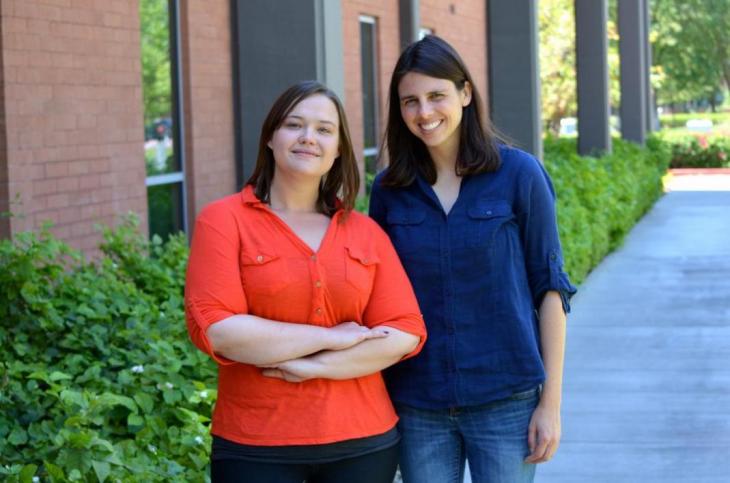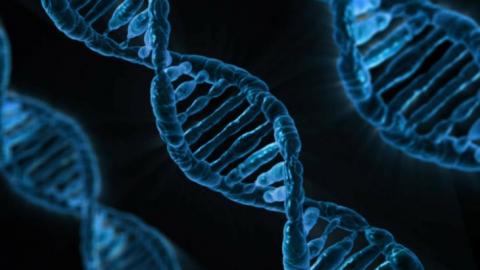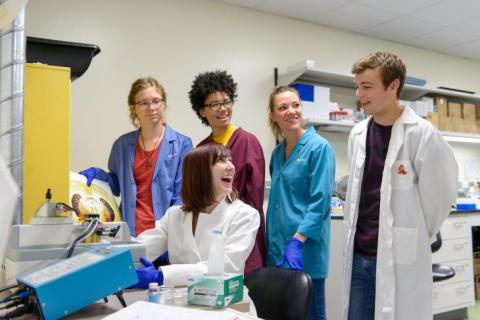The call for cultural competence in biology education
The call for cultural competence in biology education

Tempe, Ariz., December 5, 2017 — Whether or not students accept evolution is mainly predicted by their religious beliefs and not their understanding of the subject. Now, in an essay published in Cell Biology Education — Life Sciences Education and a new paper published in Science Education, Arizona State University researchers Sara Brownell and Elizabeth Barnes have issued a call for cultural competence in the classroom while providing an argument that such practices can improve a religious student’s acceptance of evolution.
Brownell and Barnes, an assistant professor and Ph.D. candidate in the School of Life Sciences and Center for Evolution and Medicine, describe cultural competence as the ability of individuals from one culture to bridge the cultural differences and effectively communicate with individuals from a different culture. The need for this skill arises amid tension between largely non-religious biology instructors and their largely religious students.
“Most instructors teaching evolution at public institutions are secular — they may even harbor negative stereotypes about religion or make antagonistic comments in the classroom,” Barnes said. “And when we interviewed students in their classes, they were definitely aware of those negative attitudes of the instructor.”
These differing beliefs may be a barrier for students accepting evolution because instructors may present evolution as incompatible with their religion or ignore student religious beliefs entirely. However, there are instructors who are using teaching practices that present evolution and religion as potentially compatible. Barnes and Brownell’s new research on 32 evolution instructors at Christian universities across the country shows that Christian university instructors’ teaching practices are substantially different than instructors at secular institutions and tend to acknowledge student religious beliefs and present evolution and religion as compatible.
Brownell commented “These Christian university professors were using known practices that can help religious students accept evolution, such as presenting their students with role models who both accept evolution and are religious. In fact, they often presented themselves as a role model.”
According to this interview study, almost all the Christian university instructors used teaching practices to lessen student perceived conflict between religion and evolution. They said that they often used these practices because of their own personal experience learning evolution.
Brownell and Barnes describe these practices in their essay and say that anyone teaching evolution could use them to dampen the perceived conflict between evolution and religion.
- Acknowledging students in class who may be struggling with internal conflicts between evolution and religion is important. Barnes and Brownell found that instructors have a tendency to ignore those students, which leads them to assume that instructors have a negative attitude about religion due to the broader cultural context of secularism in biology.
“We are not suggesting to teach creationism – we are merely suggesting to acknowledge that students come into the classroom with religious beliefs – just like any other social identity that they have” Brownell said.
- Providing students with examples of religious, scientist role models can help them accept evolution themselves.
“A lot of students think that if you’re a biologist who accepts evolution, you have to be an atheist,” Barnes said. “But that’s not true. We actually have a lot of examples, such as Francis Collins. He’s the director of the National Institutes of Health, headed the Human Genome project and is a great supporter of evolution. He also self-identifies as an Evangelical Christian.”
- Teaching students about the spectrum of viewpoints on the relationship between religion and evolution. By talking about theistic evolution, the belief that God and evolution exist alongside each other in some manner, students will be more likely to accept evolution.
“People often assume that it is an either/or situation. You can be an atheist who accepts evolution or you can reject evolution and be religious. However, there are lots of viewpoints in between those extremes” said Brownell.
- Informing students that science is only equipped to answer questions about the natural world, using natural explanations. This runs counter to common misconceptions, and reminds students that science does not have the tools to answer questions about the existence God.
According to Barnes, “science is agnostic, not atheistic.”
Barnes and Brownell have created and shared this framework to encourage instructors to think about how students in their classes may feel while learning about evolution. Since their goal, and the goal of all evolution instructors is to increase acceptance of evolution, these culturally competent steps may help achieve those goals.
Finally, according to Barnes and Brownell, their next steps will involve testing these strategies by studying what happens when they are introduced to a classroom that isn’t currently using them.
FOR MORE INFORMATION, CONTACT:
Jason Krell, CEM Communications Coordinator
Phone: 480-727-1233
Email: Jason.krell@asu.edu


